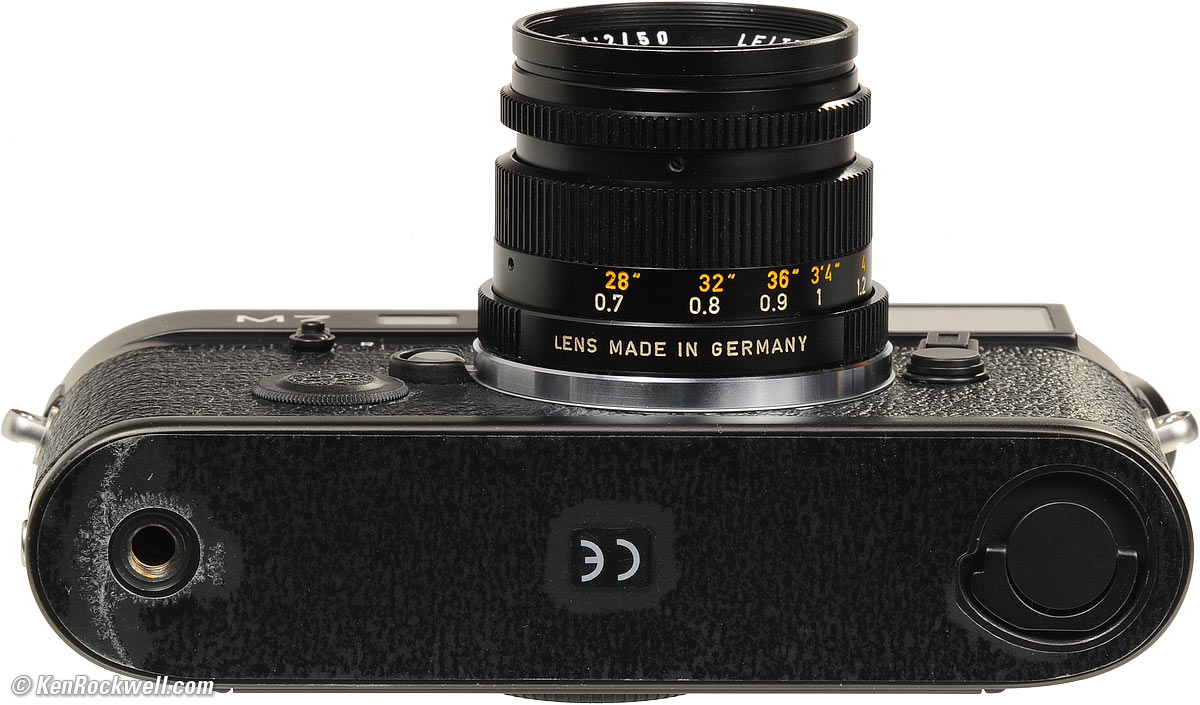

Please note: No distinction has been made where viewfinder, rangefinder base length and effective base lengths have not changed in transitionary models. It doesn’t work 100% for everyone, feels wonderfully intuitive on the M3 and is very much possible to perform with the higher magnification models you see below. The higher the viewfinder magnification, the easier it is to also use “two eye focusing”: keep both eyes open, with your right eye looking through the viewfinder. In the table below I have presented viewfinder magnification, rangefinder base length and importantly, effective rangefinder base length for every main model of Leica M film camera ever made from the 1954 M3 to the present day. The longer the base length, the longer the space between two corners of the triangle, the more accurate the rangefinder is.” It is the difference between two corners of a triangle, the third corner being the subject the camera is focusing on. “Rangefinder base length is the space between the camera’s rangefinder window and the viewfinder. To once again refer to Hamish Gill’s excellent article on the subject. A viewfinder with a high magnification that is combined with a longer rangefinder base length makes for more accurate focusing. Viewfinder magnification and rangefinder base lengths are important from the perspective of how you see the world through your Leica and how accurately you can focus longer lenses to those with very large max apertures. Viewfinder magnifications and effective base lengths Note: The M2, M4, M4-2 and M5 finders can all be upgraded to the new standard 3-pair, 6-frameline finder of the M4-P directly by Leica or your friendly neighbourhood Leica repair tech. Still, because this information is useful, here’s a quick reference guide. When it comes down to it, you won’t know how much different framelines and pairings will bother you - if at all - until you get a chance to use one.

The basic magnification standard was set with 1981’s M4-2: 0.72x magnification and three pairs of six framelines at 28+90mm, 50+75mm and 35+135mm These three options are also available on the Leica M7 and MP (0.58x and 0.85x being à la carte custom configuration options).Īs you can see, both cameras have clean viewfinders at their respective widest framelines (far left) but the M2 wins if you’re looking for ultimate simplicity across the board.Īs I mentioned above, over the years, Leica M film cameras have become a bit of a hotch-potch of paired framelines and magnifications. I’ve drawn up the same scene as it would appear through each of the Leica M6 TTL’s three viewfinder options: 0.58x (wide), 0.72x (normal), 0.85x (long). The illustration should help demonstrate the differences in real life.

Lower magnification finders act like a wide lens and get more in. The rangefinder’s effective base length.Ī stronger/higher magnification will give you a field of view close or identical to the human eye.Viewfinder framelines (and rangefinder focusing patch).Viewfinder magnification (expressed as a decimal of 1, where 1 represents what the unaided human eye sees).Leica M viewfinders combine three main components: The Leica M6 alone has 32 special editions and counting. It would be a quick path to madness to try and include them all.

Please note: The tool intentionally skips over special editions which offered mostly cosmetic changes.
LEICA M7 FOR SALE .85 UPDATE
I’ll be continuing to update this tool and over the next few months, hope to add alternate starting points including frameline selection, max shutter speed, construction (purely mechanical vs varying degrees of electronics), etc. It starts from the same point I did - asking if you need a light meter - and goes from there. At the very least, I hope it points you in the right direction based. This interactive tool will hopefully allow you to find the perfect Leica M - or an M-mount film camera from another manufacturer - for your specific needs.


 0 kommentar(er)
0 kommentar(er)
